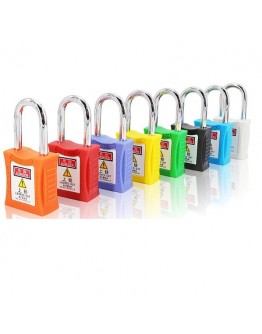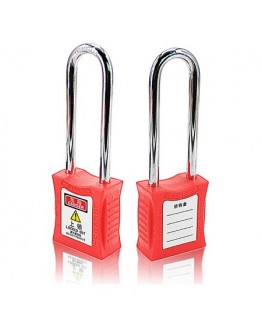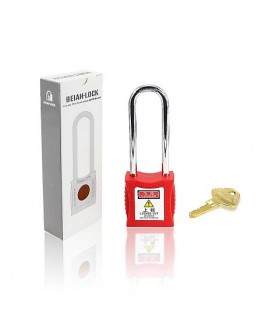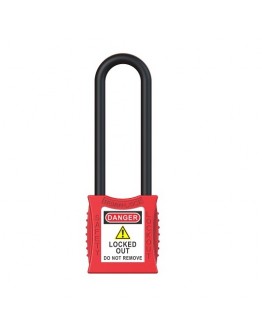
Everything You Need to Know About Lock Out Tag Out Procedures
What is Lockout Tagout Procedure?
Lockout Tagout (LOTO) is a safety procedure used to protect workers from hazardous energy sources. It involves the use of specialized locks and tags to isolate machines or equipment from their energy sources. This procedure prevents accidental or unexpected start up of machinery or equipment during maintenance and servicing activities. The primary purpose of LOTO is to protect workers from the potential for serious injury or death due to hazardous energy sources such as electrical, hydraulic, pneumatic, mechanical, chemical, thermal, and other forms of energy.
Why Is Lockout Tagout Necessary?
Lock Out Tag Out (LOTO) procedures are necessary because they help prevent injuries caused by accidental activation of machinery or equipment during maintenance and servicing activities. Without LOTO procedures in place, workers may be exposed to hazardous energy sources which can cause serious injury or death. By following these procedures, the risk of injury is greatly reduced. Additionally, LOTO procedures help ensure that machines and equipment are properly shut down and isolated before any maintenance work begins.
What Are The Steps Of Lockout Tagout Procedure?
The steps of a Lock Out Tag Out (LOTO) procedure include: identifying all potential sources of hazardous energy; isolating the source(s) with specialized locks and tags; testing the machine or equipment to confirm it has been isolated; performing the required maintenance work; restoring all components back to their original condition; removing all locks and tags; verifying that all components are operational before allowing anyone near the machine or equipment.
Step 1: Identify Potential Sources Of Hazardous Energy
The first step in any Lock Out Tag Out (LOTO) procedure is to identify all potential sources of hazardous energy that could be present in the area where maintenance work will be performed. This includes any electrical, hydraulic, pneumatic, mechanical, chemical, thermal, or other forms of energy that could cause harm if not properly managed. It is important to note that each type of energy source requires its own specific lockout tagout procedure in order for it to be safely managed.
Step 2: Isolate Sources With Specialized Locks And Tags
Once all potential sources of hazardous energy have been identified and their associated lockout tagout procedures established, the next step is to isolate those sources with specialized locks and tags. This ensures that no one can accidentally activate a machine or piece of equipment while maintenance work is being performed on it. The locks should be securely placed on each component so they cannot be removed without special tools or keys which should only be accessible by authorized personnel who understand how they work and why they are necessary for safety purposes.
What is the Lock Out Tag Out Procedure?
The Lock Out Tag Out (LOTO) procedure is a safety protocol used to protect workers from hazardous energy sources. It involves physically locking and tagging out equipment that contains potential energy sources before any maintenance, repair or installation work is carried out. The LOTO procedure is a critical part of any safety program and should be followed whenever possible.
What Does the Lock Out Tag Out Procedure Involve?
The LOTO procedure involves several steps that must be followed in order to ensure the safety of all personnel involved in the work. The first step is to identify all potential energy sources within the area where work will be conducted. This includes electricity, gas, water, steam, air pressure and other types of energy sources. Once identified, these sources must be locked out using special locks and tags that are designed specifically for this purpose.
Next, all personnel involved in the work must be made aware of the LOTO procedure before starting any work. This includes informing them of what type of locks and tags are being used and where they should be placed on the equipment. Additionally, personnel should also understand how to properly use the locks and tags in order to ensure their safety while working on or near hazardous equipment.
Why is Lock Out Tag Out Important?
The LOTO procedure is an essential part of any safety program because it helps prevent accidents caused by hazardous energy sources. By physically locking out equipment before any work is performed, it ensures that no one can accidentally start or operate machinery while someone else is working on it. Additionally, by tagging out equipment with specific warnings or instructions about how to safely use it, it ensures that personnel understand what they need to do when working with potentially hazardous equipment.
In addition to preventing accidents from occurring due to hazardous energy sources, following the LOTO procedure also helps protect workers from electrical shock and other injuries caused by these types of hazards. By following this important safety protocol, companies can reduce their risk of liability in case an accident does occur due to a lack of proper safety protocols being followed.
How Can Companies Implement a Lock Out Tag Out Procedure?
Companies can implement a LOTO procedure by creating a written policy outlining how it should be followed in their workplace environment. Additionally, they should provide employees with training on how to properly use locks and tags as well as how to identify potential energy sources within their workplace environment. Finally, companies should also provide employees with access to lock out tag out devices such as lockout boxes or portable lockout kits so that they can easily secure hazardous equipment when necessary.Having a comprehensive lock out tag out procedure in place can help ensure that all personnel are protected from potentially dangerous energy sources while performing their job duties safely and efficiently. Furthermore, having access to proper lock out tag out devices can make it easier for personnel to follow this important safety protocol correctly every time they need to do so in order for everyone’s safety at work sites across industries throughout the world.
What Is a Lock Out Tag Out Procedure Checklist?
A Lock Out Tag Out Procedure Checklist is a document used to ensure that all safety precautions are taken when working on or near hazardous equipment. It lists the steps necessary to safely shut down and secure equipment, as well as the safety protocols that must be followed during the process. The checklist is designed to help ensure that workers are following all safety protocols and procedures when dealing with potentially dangerous machinery or situations. By having a Lock Out Tag Out Procedure Checklist in place, employers can reduce the risk of accidents and injuries in the workplace.
Why Is It Important to Have a Lock Out Tag Out Procedure Checklist?
Having a Lock Out Tag Out Procedure Checklist in place is important for several reasons. First, it helps ensure that workers are following all safety protocols when working with potentially dangerous machinery or situations. By having a checklist in place, employers can reduce the risk of accidents and injuries in the workplace. Additionally, having a checklist helps ensure that workers understand what steps they need to take when dealing with hazardous equipment or situations. This can help prevent costly mistakes from occurring due to lack of knowledge or understanding of proper safety procedures.
What Should Be Included on a Lock Out Tag Out Procedure Checklist?
A Lock Out Tag Out Procedure Checklist should include all necessary steps for safely shutting down and securing equipment, as well as any safety protocols that must be followed during the process. This should include any necessary lockout devices, such as locks and tags, which must be applied before work can begin on hazardous equipment. Additionally, it should list any other safety precautions that must be taken while working on or near hazardous equipment, such as wearing protective clothing and eyewear. Finally, it should also list any other relevant information related to the specific type of equipment being worked on.
How Can Employers Use a Lock Out Tag Out Procedure Checklist?
Employers can use a Lock Out Tag out Procedure Checklist to ensure that their employees are following all safety protocols when working with hazardous equipment or situations. The checklist can also be used as an educational tool for new employees who may not be familiar with proper lockout/tagout procedures. Additionally, employers can use it to audit existing procedures and make sure they are up-to-date and compliant with applicable regulations. Finally, employers can use it for training purposes by reviewing each step in the procedure with their employees prior to beginning work on hazardous equipment or situations.
What is Lock Out Tag Out Procedure Canada?
Lock Out Tag Out Procedure Canada (LOTO) is a set of safety protocols designed to protect workers from the hazards of working with or near energized machinery. It is a system that requires the use of specialized locks and tags to ensure that machines are completely shut off and de-energized before any maintenance, repairs, or cleaning activities can take place. LOTO procedures are in place to protect workers from serious injury or even death due to electric shock, burns, or other hazardous situations. The Canadian Centre for Occupational Health and Safety (CCOHS) has developed guidelines for employers in order to ensure that all safety protocols are followed correctly.
Why is Lock Out Tag Out Procedure Canada Important?
Lock Out Tag Out Procedure Canada is an essential part of workplace safety. Without it, workers may be exposed to dangerous conditions when working with or near machinery. This procedure helps to ensure that all machines are properly shut off and de-energized before any maintenance, repairs, or cleaning activities take place. This helps to reduce the risk of electric shock, burns, or other hazardous situations occurring while on the job. In addition, it also helps employers meet their legal obligations under the Occupational Health and Safety Act (OHSA).
What Does Lock Out Tag Out Procedure Canada Involve?
The Lock Out Tag Out Procedure Canada involves several steps that must be taken in order for it to be effective. First, the machine must be shut off and de-energized by using a specialized lock and tag system. Once this has been done, all employees must be notified of the situation so they can avoid any contact with the machine until it has been cleared as safe by an authorized person. After this has been done, only then can maintenance, repairs, or cleaning activities take place on the machine in question.
Who Should Perform Lock Out Tag Out Procedures?
Only qualified personnel should perform lock out tag out procedures in accordance with Canadian regulations and standards for workplace safety. These personnel should have received proper training on how to use locks and tags as well as how to identify potential hazards associated with working on energized equipment. Additionally, they should be familiar with all applicable laws relating to LOTO procedures in order to ensure compliance with them at all times when performing these tasks.
How Can Employers Implement Lock Out Tag Out Procedures?
Employers can implement LOTO procedures by providing proper training for their staff on how to use locks and tags as well as how to identify potential hazards associated with working on energized equipment. Additionally, they should create a written policy outlining their expectations regarding LOTO procedures which should include clear instructions on who is responsible for performing these tasks as well as what steps need to be taken when doing so. Finally, employers should conduct regular inspections of their equipment in order to ensure that LOTO procedures are being followed correctly at all times.
What is Lock Out Tag Out Procedure Template?
Lock out tag out procedure template is a document that outlines the steps necessary to perform a lock out tag out procedure. This procedure is used to ensure the safety of personnel when working with hazardous energy sources. It includes detailed instructions on how to isolate hazardous energy sources, secure them in a safe manner, and ensure that personnel are not exposed to any potential risks. The template also outlines the necessary safety equipment and supplies that should be used when performing a lock out tag out procedure.
Why Use Lock Out Tag Out Procedure Template?
Using a lock out tag out procedure template ensures that all personnel involved in the process are aware of the necessary steps and safety precautions needed to complete the task safely. This template also helps organizations keep track of their procedures and ensure that they are up-to-date with current regulations and standards. Additionally, it helps organizations save time by providing an easy-to-follow document that outlines all of the necessary steps for completing a lock out tag out procedure correctly.
What Should Be Included in Lock Out Tag Out Procedure Template?
A good lock out tag out procedure template should include detailed information about how to properly secure hazardous energy sources, as well as instructions on how to safely disconnect them from any power sources. Additionally, it should include information on what types of safety equipment must be used when performing this type of work, such as gloves, protective eyewear, hard hats, etc. It should also provide information on how to properly store any tools or materials used during the process.
How To Implement Lock Out Tag Out Procedure Template?
When implementing a lock out tag out procedure template into an organization’s safety program, it is important to ensure that all personnel understand the importance of following these procedures correctly at all times. Organizations should provide training on how to use the template and make sure everyone understands how to use it correctly. Additionally, organizations should make sure that all personnel are aware of any changes or updates made to the template over time so they can stay up-to-date with current regulations and standards.
How Can Companies Ensure Compliance With Lock Out/Tag Out Procedures?
Companies should ensure compliance with lock out/tag out procedures by providing employees with training on how to properly use the procedure template. Employees should also be made aware of any additional safety precautions they need to take when working on machines and equipment, such as wearing protective gear or using special tools. Companies should also conduct regular audits of their lock out/tag out procedures in order to identify any areas where improvements could be made in order to further reduce the risk of accidents or injuries due to improper use of machinery.
What Are The Potential Risks Of Not Following Lock Out Tag Out Procedures?
Failing to follow lock out tag out procedures can have serious consequences including injury or death due to unexpected exposure to hazardous energy sources such as electricity, steam, hydraulic pressure etc.. Additionally, not following LOTO procedures can result in costly repairs due to accidental damage or destruction of expensive machinery during maintenance activities if it was not properly shut down beforehand. Therefore it’s essential for employers and workers alike to follow lock out tag out procedures when working with potentially hazardous materials or equipment in order maintain a safe working environment and reduce costly repairs due unforeseen incidents.
Lock Out Tag Out Procedure Example
As an example of a lock out tag out procedure example, consider a situation where an employee needs to perform maintenance on an industrial machine such as a drill press or lathe. The employee would first identify all hazardous energy sources associated with the machine (such as electrical power). Next he would de-energize these power sources by disconnecting them from their power source (such as unplugging from an outlet). He would then attach appropriate lockout devices such as padlocks or circuit breakers so that no one else could accidentally start up the machine while he was working on it. Finally he would test for residual energy before beginning his work on the machine in order to ensure it was safe for him to proceed with his task without fear of being exposed to any dangerous conditions due to unexpected start-up of the equipment during his service work.
Conclusion
A Lock out Tag out Procedure Checklist is an important document used by employers to ensure that their employees are following all necessary safety protocols when working with hazardous equipment or situations. It provides detailed instructions for safely shutting down and securing equipment as well as any other relevant information related to the specific type of machinery being worked on. By having this checklist in place, employers can reduce the risk of accidents and injuries in the workplace while ensuring compliance with applicable regulations.
Lock out tags are important procedures for ensuring personnel safety when working with hazardous energy sources. A good lock out tag out procedure template can help organizations keep track of their procedures and ensure they are up-to-date with current regulations and standards while saving time by providing an easy-to-follow document outlining all necessary steps for completing this process safely. Organizations should provide training on how to use lockout tagout procedure templates, as well as make sure everyone understands any changes or updates made over time so they can stay compliant with regulations and standards at all times.
Related products
Steel Shackle LOTO Safety Lockout Padlock BEIAN-LOCK BAN-201Enhance workplace safety with Beian Lock Steel Shackle LOTO Safety Lockout Padlock BAN-201. Constructed from durable Nylon+Fiber material, this safety padlock meets OSHA1910.147 regulations and features a 6.3mm diameter, 38mm height shackle, and a robust thermoplastic body. With dimensions of 46*23.5*95.4mm and weighing 120g, it offers reliability and security for lockout/tagout procedures. The padlock complies with the "one employee, one lock, one key" directive and features a specially designed double slot key for multi-level management. The key retaining feature ensures the key can only be removed when the padlock is locked, providing added security.Robust Padlock for Effective Lockout-Tagout ProceduresDurable Construction: Made of imported Dupont Nylon and Fiber, this padlock is sturdy and resilient, meeting rigorous safety standards and regulations.Robust Body: Features a 1-1/2”(3.8cm) wide and 1-3/4”(4.5cm) tall thermoplastic body, providing durability and reliability in industrial environments.OSHA Compliance: Complies with OSHA "one employee, one lock, one key" directive, ensuring adherence to lockout/tagout procedures for enhanced workplace safety.Double Slot Key Design: Specially designed double slot key allows for multi-level management, offering flexibility and security in lockout procedures.Key Options: Available in KD/KA/MK or KAMK options, providing customizable keying solutions to meet specific security requirements.Key Retaining Feature: Ensures the key can only be removed when the padlock is locked, preventing unauthorized access and enhancing security measures.Versatile Application: Suitable for a wide range of industrial, commercial, and residential settings, including machinery, equipment, and electrical systems.Easy to Use: Simple operation allows for quick and efficient lockout/tagout procedures, with minimal training required for personnel.Lightweight and Compact: Compact dimensions (46*23.5*95.4mm) and lightweight design (120g) facilitate easy handling and storage.Multipurpose Design: Compatible with various lockout devices, such as lockout hasps, gate valve lockouts, and circuit breaker lockouts, for versatile lockout applications.Color:Red lockout padlockOrange lockout padlockYellow lockout padlockBlue lockout padlockGreen lockout padlockPurple lockout padlockBlack lockout padlockWhite lockout padlockKey management systemLockout padlock keyed differentLockout padlock keyed alikeKeyed Different with Master KeyKeyed Alike with Master KeyPacking1. 1 piece safety padlock with 1 piece key.2. 1 piece safety padlock in a mini box.3. 10 pieces safety padlocks in a bigger box.4. 20 boxes in a carton (60*25*24.5cm)..
Add to CartLockout Tagout Padlock LOTO With Steel Long Shackle BEIAN-LOCK BAN-201LEnsure optimal security with the Beian Lock BAN-201L LOTO Safety Lockout Padlock. Crafted from durable imported Dupont nylon and steel, this padlock features a 6.3mm diameter steel shackle with a 76mm height, providing enhanced security and resistance to tampering. The lock body is made of lightweight and insulated Xenoy® material, offering durability and protection against extreme temperatures, chemicals, and UV rays. With double chrome plating, it boasts exceptional corrosion resistance for long-lasting performance in harsh environments. Featuring a strongly key retaining feature, this padlock ensures keys can only be removed when the padlock is locked, enhancing security and preventing unauthorized access.Ensure Effective Lockout Tagout Measures with Beian-Lock BAN-201LDurable Construction: Constructed from imported Dupont nylon and steel, ensuring durability and resistance to tampering.Enhanced Security: Features a 6.3mm diameter steel shackle with a 76mm height, providing enhanced security and resistance to cutting or prying.Insulated Lock Body: Made of lightweight and insulated Xenoy® material, offering protection against extreme temperatures, chemicals, and UV rays.Corrosion Resistance: Double chrome plating provides exceptional resistance to corrosion, ensuring long-lasting performance in harsh environments.Key Standardization: Each padlock is equipped with one key, ensuring standardization and ease of use.Key Retaining Feature: Strongly key retaining feature ensures keys can only be removed when the padlock is locked, enhancing security and preventing unauthorized access.Versatile Application: Suitable for use in various industrial settings for lockout/tagout procedures, machinery, equipment, and more.Color:Red lockout padlockOrange lockout padlockYellow lockout padlockBlue lockout padlockGreen lockout padlockPurple lockout padlockBlack lockout padlockWhite lockout padlockPacking:1 piece safety padlock with 1 piece key.1 piece safety padlock in a mini box.50 pieces safety padlocks in a bigger box...
Add to CartLOTO Safety Nylon Non-conductive Lockout Padlock for Industrial Safety BEIAN-LOCK 202LEnhance industrial safety with the Beian Lock 202L LOTO Safety Nylon Non-conductive Padlock. Crafted from Imported Dupont Nylon material, this padlock features a 6.3mm diameter nylon shackle with a 76mm height, providing reliable security for various industrial applications. Compliant with OSHA regulations, this padlock follows the "one employee, one lock, one key" directive, ensuring workplace safety. With a specially designed double slot key system and options for key difference, key alike, master key, or keyed alike master key configurations, this padlock offers versatile security solutions. The key retaining feature allows the key to be removed only when the lockout tagout padlock is locked, enhancing security measures.Trusted Security Solutions by Beian-Lock 202LDurable Construction: Made of Imported Dupont Nylon material for the lock body, ensuring durability and resistance to environmental elements.Non-conductive Nylon Shackle: 6.3mm diameter nylon shackle with a 76mm height, suitable for applications where electrical conductivity is a concern.Compliance with OSHA Regulations: Follows the "one employee, one lock, one key" directive, enhancing workplace safety.Multi-Level Management: Specially designed double slot key system and options for key difference, key alike, master key, or keyed alike master key configurations, providing versatile security solutions.Key Retaining Feature: The key can only be removed when the padlock is locked, preventing unauthorized access and enhancing security measures.Lightweight and Compact Design: Compact dimensions of 42×45×20.5mm and lightweight construction for easy handling and transportation during lockout/tagout procedures.Tensile Tested Shackle: 76mm nylon shackle height available, nylon shackle can pass the tensile test, ensuring reliable security in various industrial settings.Versatile Application: Suitable for a wide range of industrial applications, including electrical, machinery, and equipment lockout.Color:Red lockout padlockOrange lockout padlockYellow lockout padlockBlue lockout padlockGreen lockout padlockPurple lockout padlockBlack lockout padlockWhite lockout padlock..
Add to Cart











.png)